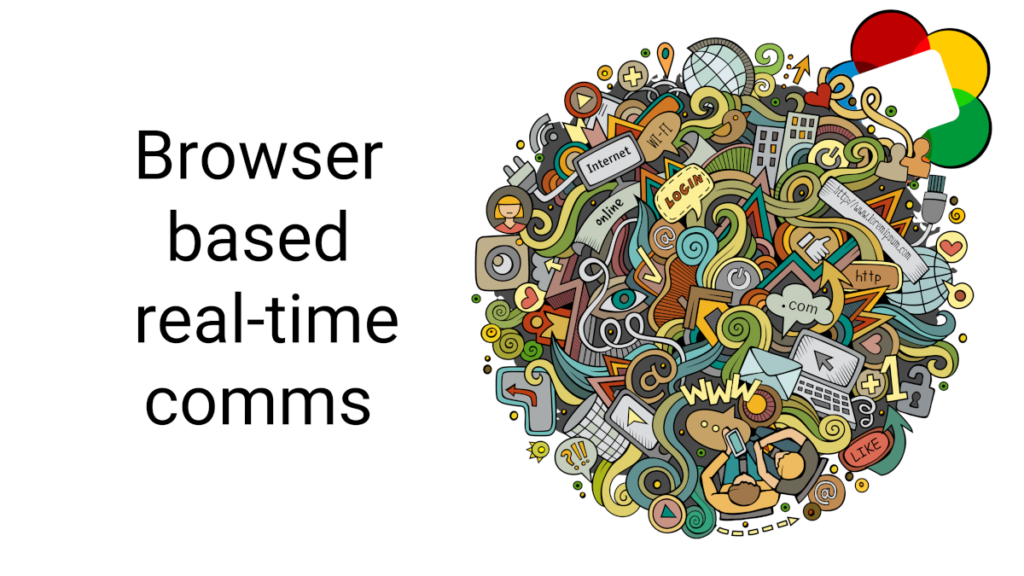Rethink the way we look at interoperability and standardization in communications, now that we live in a WebRTC & Zoom world.

We live in a different world. This video popped up in my Facebook as something I shared a year ago:
It is in Hebrew, but there are enough words in English there to make it quite apparent. This comedian is trying to explain to his mother over the phone how to use Zoom.
Today? Everyone knows how to use Zoom. Or WebRTC.
The transformation of communication technology
Rewind 20+ years ago

I started my professional adult life in a video conferencing company. There, I lived and breathed interoperability and standards for the better part of 13 years. I have a few contributions that got approved at the ITU and 3GPP. I’ve been to interoperability events and even hosted two of those in Israel.
At the time, the mindset was a telephony one:
- There is a single way of doing things. We call that the standard specification
- Vendors can implement different components of that specification
- A buyer can purchase any component from any vendor and miraculously, his new purchase would “speak” to all other components on the network
- Why? Because they are all interoperable. Per the standard
There were two main reasons why we wanted such a world to live in:
- Lower the barrier of entry. For a single company to develop it all requires huge budgets. Smaller vendors couldn’t take that risk and we wanted the innovation
- Monopoly power and vendor lock in. We wanted to give clients choice in what they purchased and have the ability for them to mix and match and not be locked in to a specific vendor for life
The rise of the smartphone (and the cloud)
Then Apple came with the iPhone and changed. Everything.
From embedded platforms, the smartphones became open programming platforms (open even within the closed gardens of their app stores).
Today, many of the embedded devices include an Android operating system, making it ever easier to develop software for them.
This brought with it a new kind of openness:
- You didn’t have to purchase a device that adhered to a standard specification
- The alternative was to download or install the necessary communication software instead
This didn’t mean standards were unimportant. It meant that interoperability became less interesting. Vendors could now bake their own proprietary additions on top of the standards that give extra features without the need to think too much about interoperability with other vendors – that’s because your client now brings his own device (BYOD) and you supply the software application to connect to the infrastructure.
Oh, and by the way – that infrastructure? It is now built in the cloud. And the cloud enables rapid development and hyper growth. Which again means that caring about interoperability becomes less of an issue between the client device and the cloud infrastructure – vendors are more interested in interoperability between their infrastructure components or with external service providers – via gateways.
This turned communications from a service into just another application on our phones.
A new way to look at communication standards: WebRTC

WebRTC came to our world about 10 years ago and changed the paradigm again.
Where the smartphone and the cloud reduced our dependency and need for interoperability, WebRTC reduced our dependency and need for standardization.
We still need standardization – after all, WebRTC is a standard.
But the standardization we care about is mostly the browser implementations versus the specification (and interoperability between browsers). Other than that? We couldn’t care less.
The client side is no longer even a software application. It is a bunch of JavaScript lines of code that get executed inside a web browser that supports WebRTC. We can still do applications, and we do, but the concept and the intent is the same – standardization across vendor’s components and devices is now overrated and mostly unnecessary.
If we need standardization and interoperability, we let gateways do it. As we did in the era of the smartphone.
WebRTC also made communications more accessible. Web developers could now use it, and you could easily embed and stitch it right into your application as a seamless part of your business process flow.
This turned communications from a service or an application into a feature in another service or application.
Zoom and the pandemic

Then the pandemic came and made a world a lot smaller. It made sure we all know how to use video communications.
Zoom became a household name across the globe and turned into a noun.
Zoom is proprietary. It doesn’t even use WebRTC.
No standards. Which lead to a lot of security missteps.
But it worked. And now Zoom has a Client SDK a Video SDK and Zoom Apps. With the intent of making their infrastructure and technology integratable with anything and everything.
This is an attempt to turn communications from a service or an application or a feature into… a platform.
Workshop: The Future of Video & Realtime Communications

A few weeks ago, I had a conversation with Dean Bubley. We wanted to do something together, and decided to create a joint workshop.
The question of the role of standardization and interoperability is one of those we are going to tackle in the upcoming workshop.
If you are interested in the workshop’s recording, register below.
